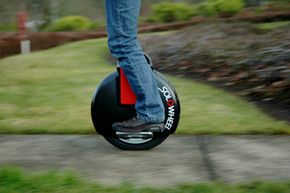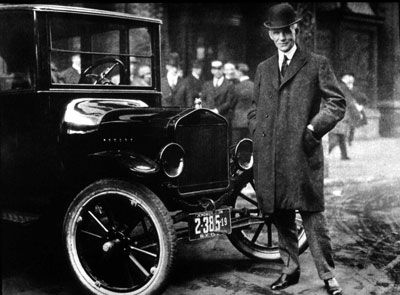You've probably seen the comic strip "B.C." It's about a group of cartoon cavemen with suspiciously modern attitudes, one of whom is an inventor named Thor. And what has this inventor invented? The wheel, of course. Thor's wheel is carved out of stone and has a short axle that he can put his feet on, allowing him to stand on it and ride it over hills and through valleys, sort of like a modern motorist with a single-wheeled vehicle instead of a full-sized car.
Well, if history can repeat itself, so can prehistory, even comic strip prehistory. The Solowheel from Inventist, Inc. is simultaneously an advanced form of low-energy, zero-emission, ultra-portable transportation and a modern version of Thor's prehistoric wheel from "B.C." Not that self-balancing people movers are anything new, even in modern times. The best known product in this category is the Segway. The main difference between a Segway and a Solowheel is size. The Segway has two wheels and a long handle for the "driver" to hang on to. By contrast, the Solowheel is just what it sounds like -- a single wheel, but one with a small handle on top so that when you've finished using it for transportation, you can pick it up and carry it with you. If you're a student and you use it to get to class, you don't even need a parking space. You can just park it next to your desk. Or if you're a commuter and you use it to catch the bus, you don't have to attach it to the bike rack. You just carry it on with you. It's like a 25-lb. round suitcase with an electric motor and two small platforms on the sides to put your feet on.
Advertisement
Just don't expect to use it for long commutes without a bus or a train to help out. In its present incarnation the Solowheel has a top speed of about 12 miles per hour and runs on a battery that has a life, coincidentally, of about one hour at top speed travel. If you try to make a round trip of more than 12 miles, you could find yourself carrying the Solowheel home. So while it may have some practical uses, like making quick trips to the convenience store, the Solowheel is as much a toy as it is a commuter vehicle. It's perfect for rolling across the park on lazy weekends or just circling around the block, but not so perfect for long distance travel.
Still, prehistoric cartoon inventors notwithstanding, the Solowheel is an impressive piece of modern engineering. How exactly were the inventors at Inventist able to boil personal transportation down into something not much larger than a soccer ball? Let's take a look.
Advertisement



